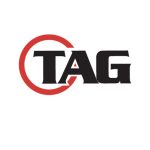It’s that time of year when Americans who made New Year’s resolutions come face-to-face with what has become known as “National Quitter’s Day,” which arrived early this year due to the timing of New Year’s Day.
The term is said to recognize that most resolutions will not last until the second weekend of the new year, observed on the second Friday of January each year. In 2025, it fell on January 10.
So, how many Americans resolved to get in shape, lose weight and run their first 5k in spring? And how many are just increasing their Ozempic dosage?
As the new year begins, a nationwide survey by the Health & Fitness Association (HFA) revealed that health, fitness, and exercise remain at the top of Americans’ New Year’s resolutions. Of the estimated 159 million adults setting goals, 60 percent — or approximately 96 million Americans — said they intend to focus on health, fitness and exercise, making it the most popular goal-setting theme in 2025.
Among these fitness-focused individuals, the HFA said the top aspirations include:
- Building Muscle or Strength: 50 percent
- Establishing a Regular Exercise Routine: 44 percent
- Improving Mental Health through Physical Activity: 42 percent
“These goals reflect a holistic understanding of fitness, highlighting its benefits for both physical and mental well-being,“ the HFA said in its report summary.
The trade association for the fitness industry, formerly IHRSA, said Americans overwhelmingly recognize the importance of structured exercise spaces, including gyms, studios, and health clubs. Based on its survey data, nearly nine-in-ten (88 percent) of surveyed respondents said access to fitness facilities would be “Important“ to achieving their 2025 goals, with 61 percent rating it “Very Important.”
“Consequently, most plan to maintain their existing membership (58 percent) or join a new fitness facility in 2025 (23 percent),“ the HFA assessed.
The HFA survey also revealed that affordability remains a concern despite the enthusiasm for fitness and exercise. Nearly one-third of respondents cited cost as a top factor that might prevent them from achieving their fitness goals in 2025. This tension between ambition and accessibility underscores a broader issue in making health and fitness achievable for all Americans.
“Americans are entering the new year with strong ambitions to improve their health and fitness, but financial strain is a real obstacle for many,“ said HFA President and CEO Liz Clark. “This represents both a challenge and an opportunity to explore strategic solutions that can make fitness more accessible to everyone.”
The survey coincides with the HFA releasing a new report, Reversing the Physical Inactivity Crisis – Fitness Affordability as Strategic Policy. Conducted in collaboration with Portas Consulting, the report explores how public investment in strategic pricing policies — such as those proposed under the PHIT Act — could expand access to structured exercise and deliver “transformative health and economic benefits.”
Key findings from the report found:
- U.S. fitness facility customers are almost 50 percent more likely to meet the World Health Organization’s (WHO) recommended physical activity levels than non-customers.
- Investing in a 10 percent reduction in fitness facility membership fees could enable 17 million more Americans to participate in structured fitness. The adjustment could prevent 500,000 chronic disease cases annually, saving $12.2 billion in healthcare costs.
- The resulting growth in fitness participation could stimulate $12.3 billion in consumer spending, create 230,000 jobs, and enhance life satisfaction and community trust for millions.
The new HFA survey and report present a roadmap for aligning Americans’ fitness goals in 2025 with actionable solutions.
“Making fitness affordable is not only about helping people meet their personal goals,“ Clark emphasized in a media statement. “It’s about fostering healthier communities and unlocking the far-reaching societal benefits that come with increased physical activity.”
Methodology: Kantar, on behalf of the Health & Fitness Association, conducted an online survey on December 19-27, 2024, among a nationally representative sample of 2,000 Americans ages 18 and older related to New Year’s resolutions and 2025 goals. The margin of error is +/- 2 percent and greater among subgroups. The report, Reversing the Physical Inactivity Crisis — Fitness Affordability as Strategic Policy, explores the impact of targeted price reductions for fitness facility memberships. Conducted by the Health & Fitness Association in collaboration with Portas Consulting, the study integrates consumer surveys with Portas’ proprietary Social Return on Investment (SROI) model to estimate the health, social and economic impact. The consumer survey, conducted in September 2024, included 1,517 adult Americans.














